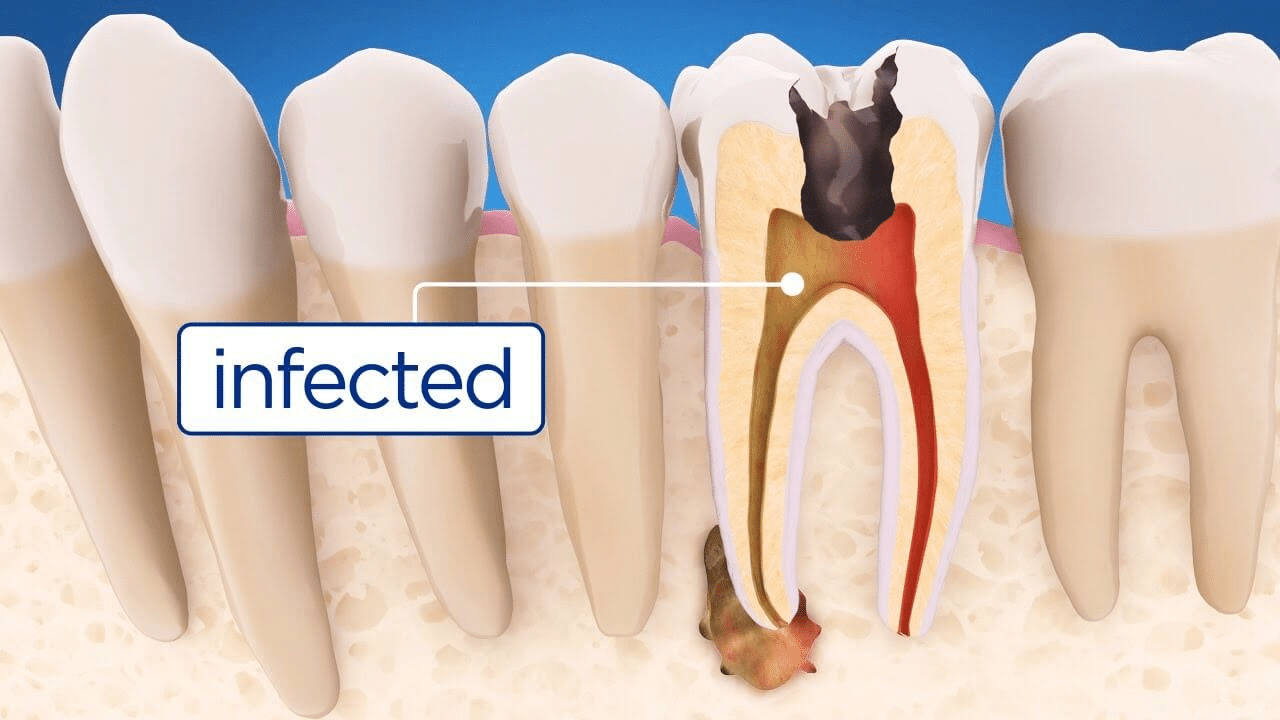Our Beverly Hills root canal therapy is a procedure that removes the dead, injured, or infected pulp of the root of a tooth. The outermost layer of the tooth is the enamel, below that is the dentin. Finally, there is an inner pulp chamber and root canal system containing the pulp tissue. The root canal system lies inside the tough layers of the tooth. It is durable as there are nerves and blood vessels, which the soft dental pulp of the root canal system is made of.
Root canals can save a dying tooth and can be the best solution for keeping a natural tooth. There are alternate options available such as tooth extractions, dental implants, or bridges. Root canals can save natural teeth, and with proper care, a treated tooth can last a lifetime.

YOU HAVE QUESTIONS, WE HAVE THE ANSWERS
ROOT CANAL FAQ
With toothaches due to an infection, root canals are the perfect solution. Without root canal treatment, the infection can possibly spread to other neighboring teeth or cause painful abscesses or worse. If a tooth infection persists, it will cause abscesses and weakening of your teeth. It can lead to possible fractures and tooth loss down the road. If there’s tooth loss, your jawbone can resorb, resulting in your other teeth becoming mobile because of the extra space. So a root canal can prevent this cascade of problems from occurring. Saving you a lot of future headaches and preserving your oral health.
The root canal therapy in Beverly Hills involves the following steps:
- Initial exam & consult: The dentist will take a thorough health history & X-rays first. This helps to diagnose the specific problem.
- Procedure Prep: This step involves using a local anesthetic to numb the tooth area. The anesthetic will numb the treated tooth to increase your comfort. A rubber dam will also be placed around the tooth to keep it dry.
- Tooth Infection Removal: Next, the dentist will drill a hole to access the inner tooth. Your dentist will then remove the nerve and pulp tissue, thus eliminating the infection.
- Tooth Sealing: With the removal of the infected material, the dentist will seal your tooth. This tooth sealing is either with a filling or dental crown. Either will protect your tooth from further infection.
The primary purpose of a root canal is to stop tooth pain and prevent infection spread. The classic symptoms of an infected tooth are:
- Severe and or throbbing tooth pain
- Feeling hot or cold tooth sensitivity with eating or drinking
- The sudden appearance of a pimple in the gums
- Tooth appearance changing to a darker shade
- Gum tenderness and swelling
If you’re noticing any of the above symptoms, contact Dr. Justin Raanan right away.
The cost of a root canal treatment will vary, and it would depend on each case. Three main factors determine the exact costs of treatment. They are:
- The tooth location: Front tooth, bicuspid, and molar.
- Post-treatment procedures: The need for fillings or dental crowns.
- Exact insurance coverage: Co-pays, deductibles, and so forth.
At our Beverly Hills dental office, we will be more than happy to check your insurance coverage.
After the procedure, it is vital to take care of your tooth. It’s also essential to do an X-ray after the process as well. The X-ray ensures that there are no additional signs of an infection. You have to get regular dental exams and cleanings as well. Your dentist and team will let you know when you need a dental cleaning or routine dental exams.
Also, maintain a good routine at home. Brush your teeth at keast twice a day. Flossing is essential as well. Invest in a good brand of toothpaste or ask your doctor for a recommendation. Make sure your toothpaste has fluoride and can fight germs as well. If your root canal treatment was done properly, your tooth is now safe, and it will function normally.
There are chances that your teeth might feel sensitive after the treatment. Our dentist can give you post-treatment instructions and prescribe medicines. Most patients report that any minor side effects like this go away on their own after a few days.
Do not chew hard after the procedure right away and wait for some time. Dr Justin Raanan, a periodontist, will recommend what to do and what to avoid after the treatment. It will be wise not to do any heavy exercise for some time after the procedure. Especially if there is a temporary filling and permanent filling is due.
414 N Camden Dr Suite 1240, Beverly Hills, CA 90210
11980 San Vincente Blvd. suite 811, Los Angeles, CA 90049


